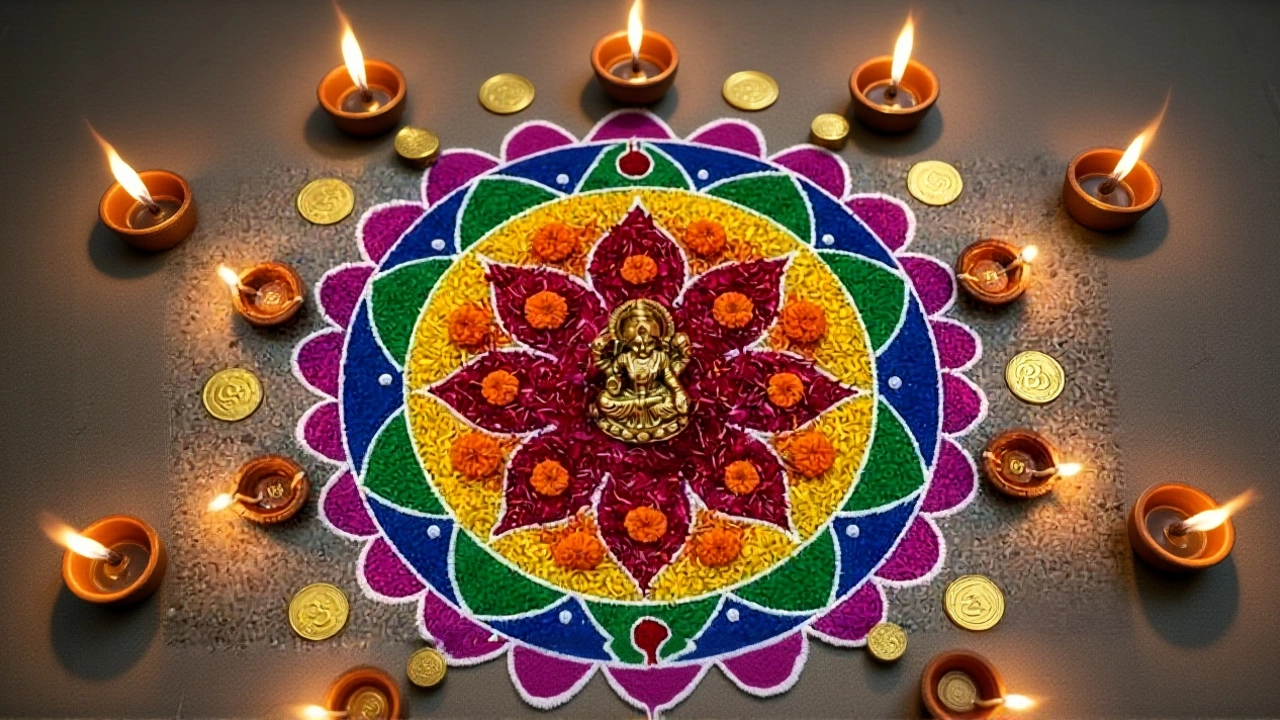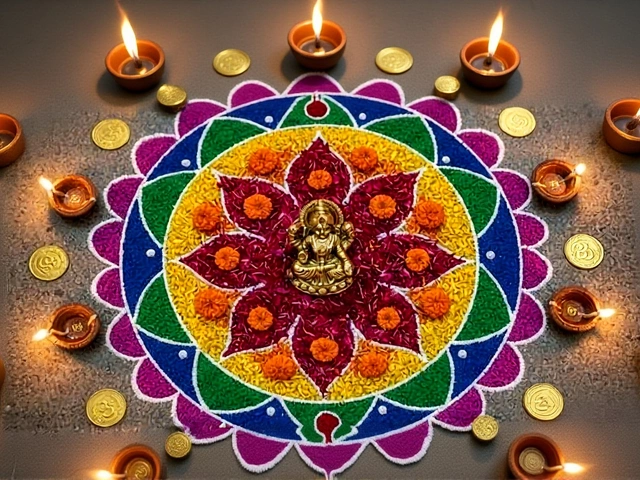Rangoli: The Colorful Indian Floor Art Tradition
When you hear about Rangoli, a vibrant floor art created with colored powders, rice, or flower petals as a way to welcome guests and celebrate auspicious moments. Also known as floor art, it blends creativity with cultural meaning, turning any doorstep into a canvas of joy. Rangoli designs vary from simple geometric patterns to intricate motifs of gods, fruits, or regional symbols, all reflecting the local heritage.
One of the biggest drivers behind Rangoli is Diwali, the Festival of Lights celebrated across India. During Diwali, families gather to draw bright patterns that echo the festival's theme of triumph over darkness. The link is clear: Diwali influences the choice of colors—gold, red, orange—and the subject matter, often featuring lamps (diyas) or lotus flowers. Another related entity is Indian festivals, a collection of cultural celebrations such as Holi, Pongal, and Navratri where Rangoli plays a welcoming role. These events shape the timing, materials, and symbolism of the artwork, making each design a living record of the occasion.
How Rangoli Connects Materials, Skills, and Community
Rangoli encompasses three core attributes: materials, technique, and purpose. The materials range from dry pigments like sindoor and turmeric to wet mixtures of flour and water, each offering a distinct texture. The technique often involves freehand drawing, stencils, or string‑aided geometry, requiring steady hands and an eye for symmetry. The purpose is both decorative and spiritual—creating a pleasant visual for visitors while invoking blessings for health, prosperity, and safety. In many neighborhoods, the activity becomes a community affair; neighbors share ideas, children help scatter colors, and elders recount mythic stories behind each motif.
Beyond festivals, Rangoli also appears during life‑milestones such as weddings, housewarmings, and even as a gesture of respect during mourning periods. The flexibility of the art lets it adapt to modern settings too—some artists use LED lights, recycled paper, or digital projections while preserving the traditional ethos. This adaptability showcases how a simple practice can evolve without losing its cultural core.
Below you’ll find a curated mix of articles that touch on the many faces of Rangoli—whether it’s the role of colors in Indian celebrations, how weather patterns affect outdoor art, or the way health guidelines shape public gatherings. Dive in to discover practical tips, regional stories, and fresh perspectives that keep this ancient art thriving in today’s world.
AI Boosts Diwali 2025 Rangoli: Top Designs with Gemini
Posted by Finnegan Beckett On 20 Oct, 2025 Comments (0)

Diwali 2025 sparks a blend of tradition and tech as Google’s Gemini Nano Banana AI helps creators craft digital rangoli designs, while artists showcase fresh floral and geometric ideas.




